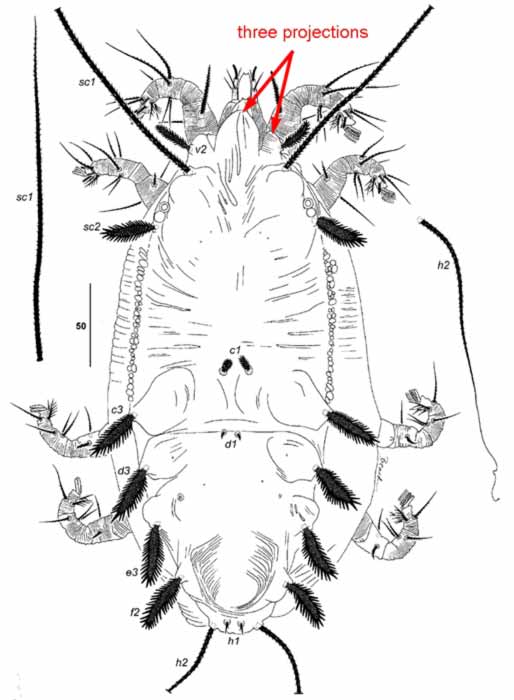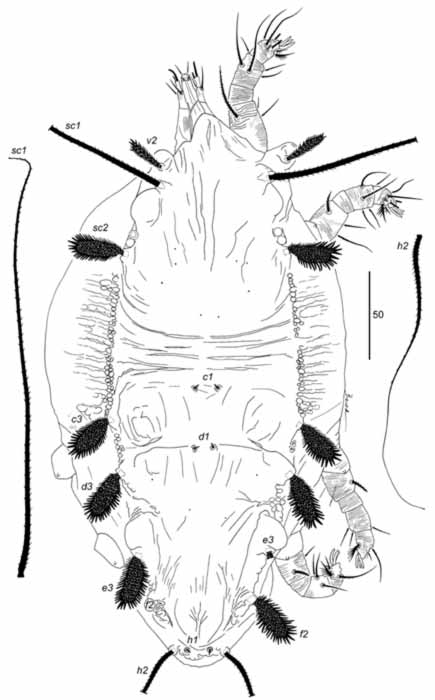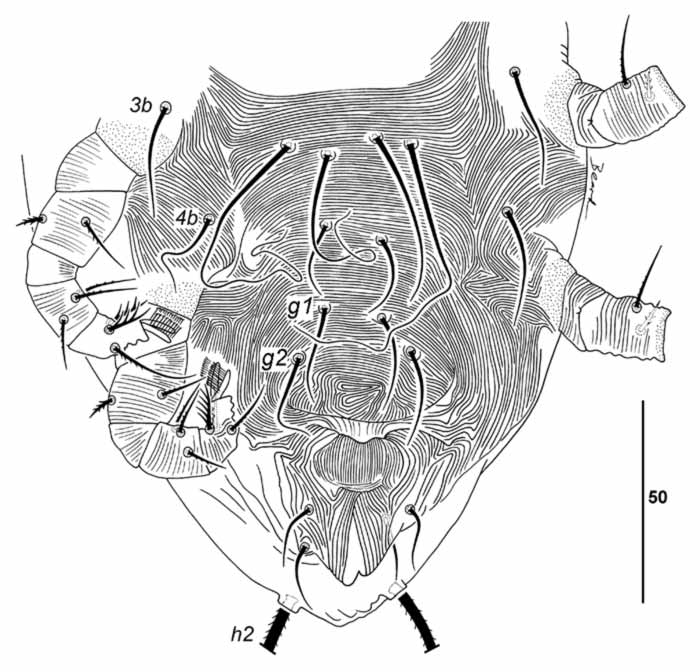Cyperacarus
|
Fig. 1. Cyperacarus naomae female dorsum. |
|
Fig. 2. Cyperacarus foliatus female dorsum. |
|
Fig. 3. Cyperacarus naomae female. |
|
Fig. 4. Cyperacarus naomae female venter. |
Key characters
- c2, d2, e1, e2, f3 absent (Figs. 1, 2)
- f2 present (inserted in an f3 position and mistaken for f3)
- h2 elongate, tapered (Figs. 1, 2, 3)
- genital setae g1 inserted anterior to g2 (Fig. 4)
- anterior margin of prodorsum with 3 projections - central large projection, flanked by two cylindrical projections each bearing seta v2
- ventral, genital and anal plates not developed, membranous (Fig. 4)
- 2 pairs ps setae (Fig. 4)
- 3 segmented palp
- ventral cuticle finely striate
Similar taxa
Acaricis - c1 absent; e1, f3 present; anterior margin prodorsum with forked projection; palp 4-segmented
Gahniacarus - f3 present; c1, d1 similar to other dorsal setae
Prolixus - body elongate; c1 absent; e1 present; f2 present or absent; anterior margin of prodorsum smoothly rounded or with small projection
Number of species
Two - C. naomae, C. foliatus
Authority
Beard and Ochoa
Distribution
Australia
Hosts
Gahnia spp. (Cyperaceae)
Colour
orange to yellow, with small black spots visible internally




